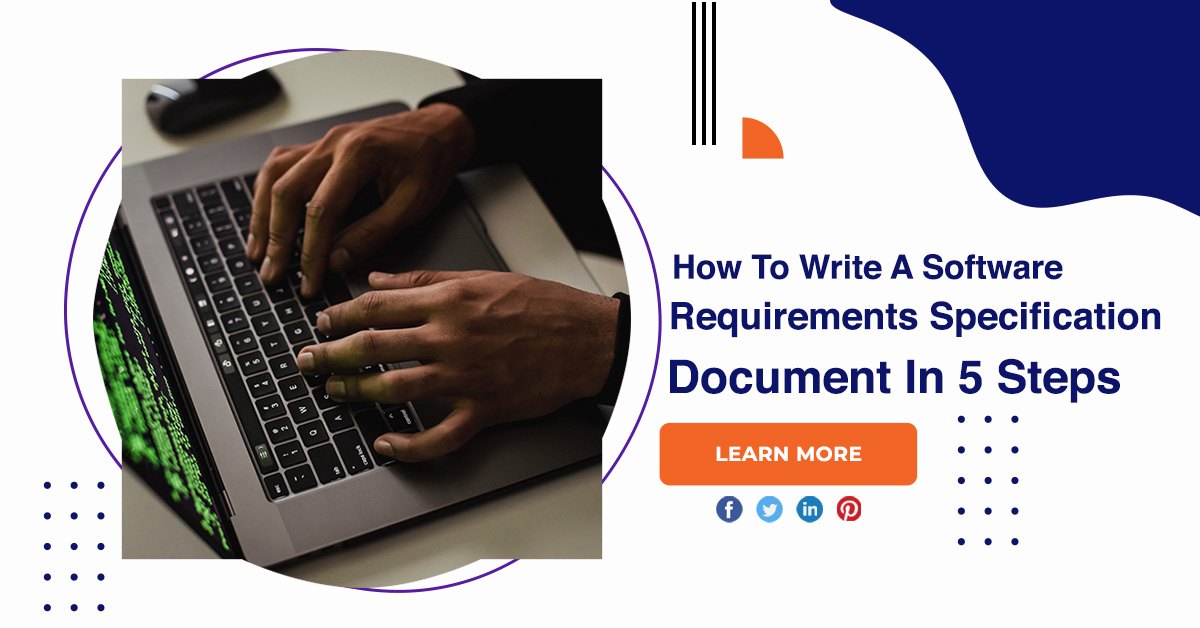How To Write A Software Requirements Specification Document In 5 Steps?
Creating a well-structured and comprehensive SRS document is an essential step in the software development process, serving as the foundation upon which successful projects are built. We will unravel the intricacies of crafting an effective SRS document in just five straightforward steps, enabling you to articulate your software project’s goals, functionalities, and constraints with precision and clarity. Whether you’re a seasoned software engineer or a novice embarking on your first project, mastering the art of SRS writing will not only streamline your development efforts but also enhance communication, reduce misunderstandings, and ultimately pave the way for the creation of exceptional software solutions.
Software requirements specification document
Definition of srs and clarification of the concept
SRS stands for Software Requirements Specification. It is a detailed document that serves as a blueprint for software development projects, outlining the functional and non-functional requirements of the system to be developed. This document provides a clear and comprehensive description of what the software should do, how it should perform, and the constraints it must adhere to.
Functional vs non-functional software product requirements
Functional requirements specify what a software system should do, defining its core functionalities and features. These requirements outline the specific actions and behavior the software must exhibit to fulfill its intended purpose, such as user interactions, data processing, and system outputs.
Who should write the software requirements document?
The software requirements document should ideally be a collaborative effort involving various stakeholders, including business analysts, product managers, software developers, and end-users. These individuals bring different perspectives and expertise to the table. Business analysts and product managers typically gather and prioritize requirements based on business objectives and user needs, while developers provide insights into technical feasibility and constraints.

Main elements of a software requirements document
A SRS serves as a critical blueprint for software development projects, outlining the essential elements that guide the entire development process. It typically includes sections such as an introduction, purpose, and scope, followed by detailed requirements specifications, functional and non-functional requirements, system architecture, data flow diagrams, use cases, and user stories.
SRS document in waterfall methodology
In the Waterfall methodology, a Software Requirements Specification document plays a pivotal role as the foundational blueprint for the entire software development process. This comprehensive document is typically created during the project’s initial phase and serves as a detailed and unambiguous reference point for all stakeholders involved.
Software requirements document in agile methodology
In Agile methodology, the traditional approach to a comprehensive and static Software Requirements Document (SRD) is replaced with a more flexible and adaptive approach. Instead of creating a lengthy and exhaustive document upfront, Agile teams focus on creating a Product Backlog or a User Story Map.
Why write software requirements specifications?
Writing software requirements specifications (SRS) is essential for the successful development of software projects. These documents serve as a comprehensive blueprint that outlines the functional and non-functional requirements of the software, detailing what it needs to do, how it should perform, and the constraints it must adhere to.

Conclusion
As I mentioned at the beginning of this article, in fast paced startup environments where founders are forced to move faster and faster, documentation like SRS often gets left behind and that’s not necessarily a bad thing if you have the right team around you. It ensures you create an SRS that clearly communicates key requirements to all members of your team, reducing development time and costs.







